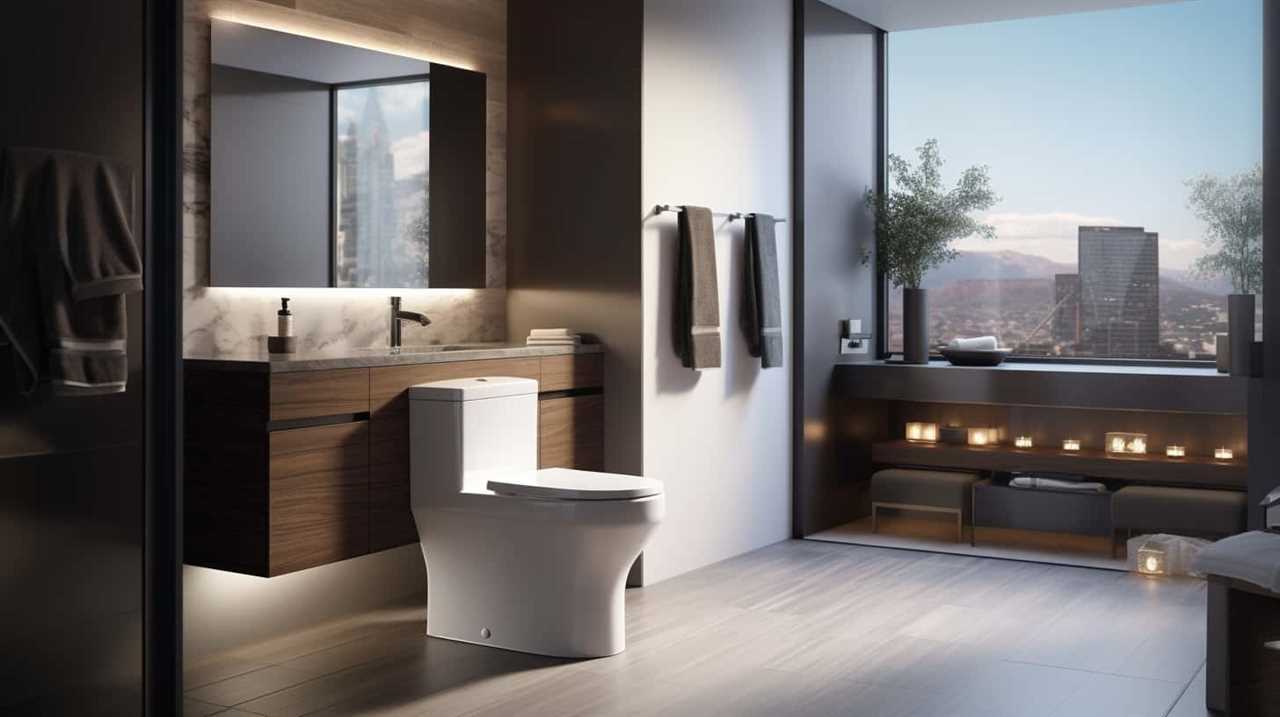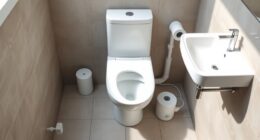In our pursuit of the ideal bathroom, we often contemplate: is a window necessary? Natural light and ventilation can turn this space into a haven, like a breath of fresh air. But are there other choices? And how do we address privacy and security concerns?
Join us as we delve into the world of bathroom design, exploring the importance of windows, building codes, and creative solutions. Get ready to master the art of maximizing light and airflow in your bathroom oasis.
Key Takeaways
- Natural light and ventilation are essential in a bathroom.
- Building codes require specific requirements for natural light and ventilation in bathrooms.
- Alternative options for windowless bathrooms include artificial lighting and ventilation systems.
- Privacy and security should be considered in windowless bathrooms.
Importance of Natural Light and Ventilation
We believe that natural light and ventilation are essential in a bathroom.
When it comes to lighting, there’s a debate between skylights and windows. Skylights offer a unique way to bring natural light into a bathroom, as they can be placed in the ceiling and allow sunlight to filter in from above.
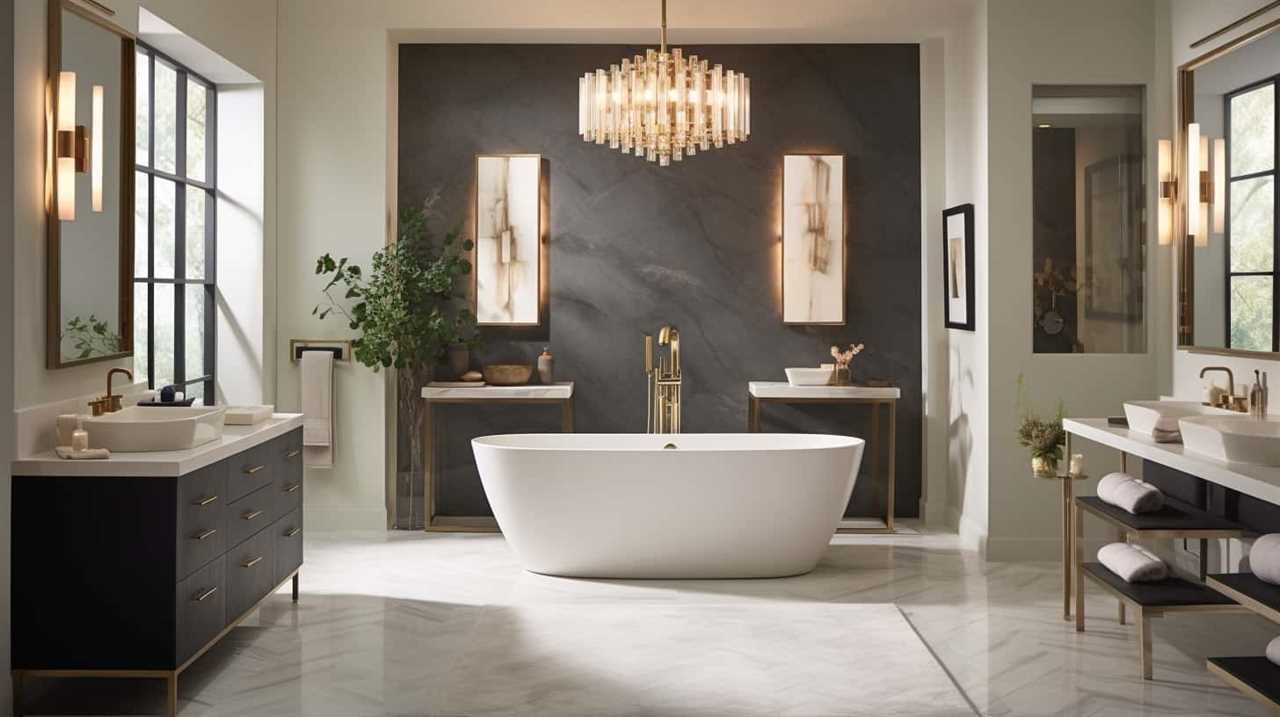
Windows, on the other hand, provide the advantage of both natural light and views to the outside.
In terms of ventilation, both skylights and windows can effectively help remove moisture, odors, and prevent mold growth.
Natural ventilation in a bathroom has several benefits, including improved air quality and reduced reliance on mechanical systems.
However, it’s important to note that building codes and regulations may dictate specific requirements for natural light and ventilation in bathrooms, which we’ll discuss in the next section.
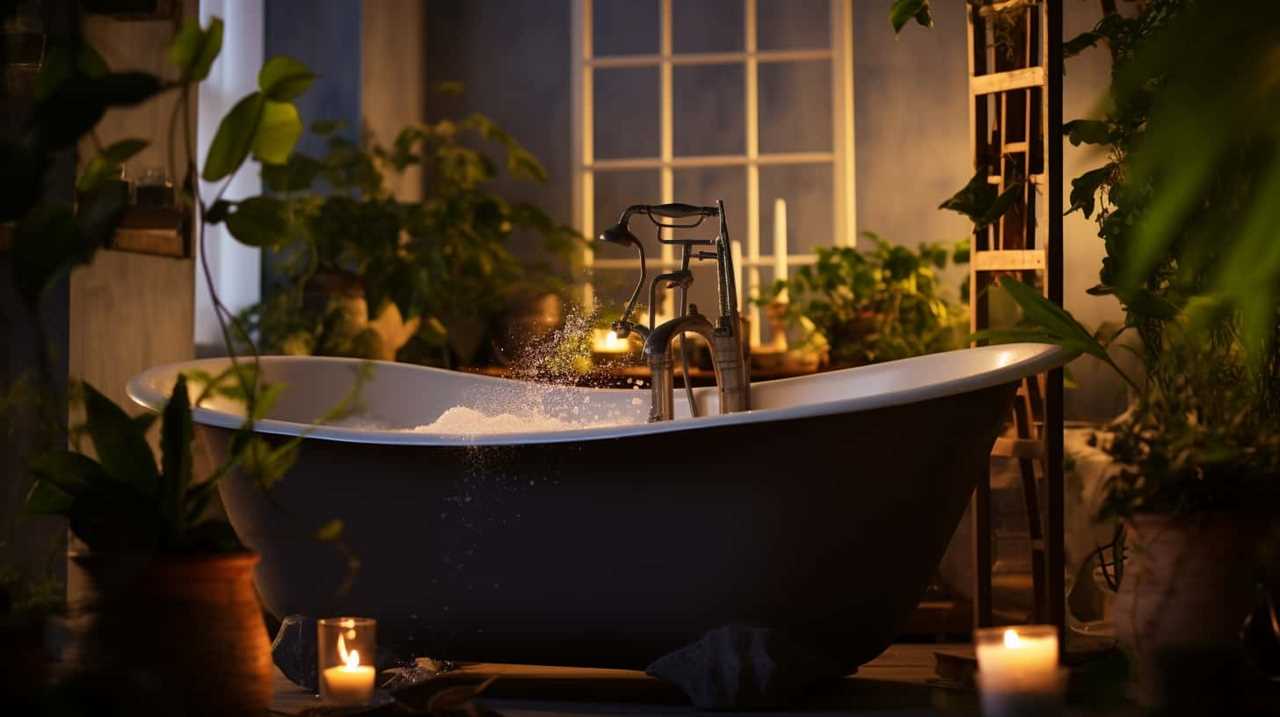
Building Codes and Regulations
According to building codes and regulations, there are specific requirements for natural light and ventilation in bathrooms. These regulations are put in place to ensure the safety and well-being of individuals using the space. Building permits are required before constructing or renovating a bathroom, and these permits often include guidelines for window installation.
Safety regulations dictate that bathrooms must have adequate ventilation to prevent the buildup of moisture, which can lead to mold and other health hazards. Natural light is also important in bathrooms as it helps to create a bright and inviting space. In addition to safety regulations, building codes also address other aspects of bathroom design, such as plumbing, electrical wiring, and accessibility.
Now that we understand the importance of building codes and regulations, let’s explore alternative options for windowless bathrooms.
Alternative Options for Windowless Bathrooms
To address the challenge of windowless bathrooms, we can explore alternative options for bringing in natural light and ensuring proper ventilation.

In terms of artificial lighting options, one effective solution is to install a combination of recessed lighting and task lighting. Recessed lighting can provide overall illumination, while task lighting can be strategically placed near the vanity or shower area to provide focused and adequate lighting. Additionally, light fixtures with daylight bulbs can mimic natural light and create a bright, inviting atmosphere.
When it comes to ventilation systems, it’s crucial to prioritize air circulation and moisture removal. Installing an exhaust fan can help remove steam and odors, preventing the buildup of mold and mildew. It’s important to choose a fan with sufficient airflow capacity for the size of the bathroom. Additionally, consider installing a humidity sensor that automatically activates the fan when excess moisture is detected.
With these alternative options, windowless bathrooms can still be well-lit and properly ventilated. However, it’s also important to consider privacy and security, which we’ll discuss in the next section.
Considerations for Privacy and Security
Moving on from the previous subtopic, let’s delve into the important considerations for privacy and security in a windowless bathroom. When designing a windowless bathroom, it’s crucial to address both privacy concerns and security risks. Here are some key factors to consider:

- Privacy concerns:
- Use frosted or textured glass for doors and partitions to maintain privacy while allowing light to pass through.
- Install window film or blinds to create a barrier against prying eyes.
- Opt for a solid door with a lock to ensure privacy when using the bathroom.
- Consider the layout of the bathroom to minimize sightlines from other areas of the house.
- Security risks:
- Install a ventilation system to prevent moisture buildup and reduce the risk of mold and mildew.
- Use quality locks and sturdy materials for doors and windows to enhance security.
- Install an effective alarm system to deter intruders.
- Consider installing motion sensor lights for added security.
Considering these factors will help ensure both privacy and security in a windowless bathroom.
Now, let’s move on to the next section where we’ll discuss design tips for maximizing light and airflow.
Design Tips for Maximizing Light and Airflow
To maximize light and airflow in a windowless bathroom, we can consider using reflective surfaces and incorporating ventilation systems. Reflective surfaces, such as glossy tiles or mirrored cabinets, can help bounce light around the space, creating a brighter and more spacious feel. Additionally, proper ventilation is crucial for maintaining air quality and preventing moisture buildup. Installing an eco-friendly ventilation system, such as a low-volume extractor fan, can help remove odors, excess humidity, and prevent mold growth. Maximizing space efficiency is key in a windowless bathroom, and thoughtful design choices can make a big difference. Consider using wall-mounted fixtures and storage solutions to free up floor space and create a more open atmosphere. By incorporating these design tips, you can create a well-lit and airy bathroom that is both functional and visually appealing.
| Design Tip 1: | Design Tip 2: | Design Tip 3: |
|---|---|---|
| Use reflective surfaces | Incorporate ventilation systems | Maximize space efficiency |
| Glossy tiles, mirrored cabinets | Low-volume extractor fan | Wall-mounted fixtures, storage solutions |
| Enhances light reflection | Removes odors and excess humidity | Frees up floor space |
| Creates a brighter and more spacious feel | Prevents mold growth | Creates an open atmosphere |
| Eco-friendly design | Eco-friendly design | Maximizing space efficiency |
Frequently Asked Questions
Can I Install a Skylight Instead of a Window in My Bathroom?
Yes, we can install a skylight instead of a window in our bathroom. Skylight installation offers many benefits, such as increased natural light and improved ventilation. Let’s compare skylights and windows to make an informed decision.
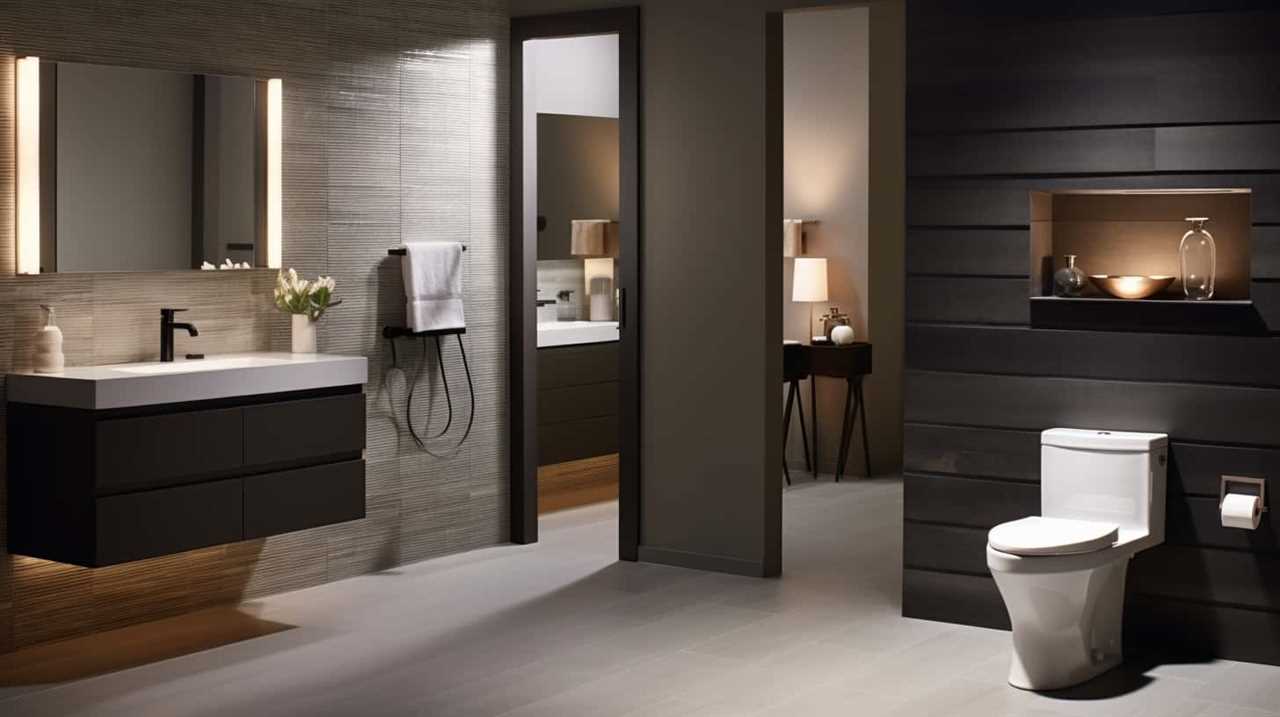
What Are the Building Code Requirements for Bathroom Window Size and Placement?
Building code regulations dictate the size and placement of bathroom windows. These requirements ensure proper ventilation and natural light. Compliance with these regulations is necessary to meet safety standards and maintain a healthy and functional bathroom space.
Are There Any Alternatives to Windows for Bringing Natural Light Into a Bathroom?
When considering alternatives to windows in bathrooms, it’s important to weigh the pros and cons. While windows provide natural light, they can compromise privacy and require maintenance. Other options, like skylights or light tubes, offer solutions that balance functionality and aesthetics.
How Can I Ensure Privacy in a Bathroom Without a Window?
Maximizing privacy in a bathroom without a window can be achieved by using frosted glass, window film, or blinds. Additionally, artificial lighting options such as recessed lights and task lighting can provide adequate illumination.
What Are Some Design Tips for Maximizing Natural Light and Airflow in a Windowless Bathroom?
To maximize natural light and airflow in a windowless bathroom, we recommend using techniques such as maximizing artificial lighting, utilizing reflective surfaces, and strategically placing mirrors to create the illusion of space and brightness.
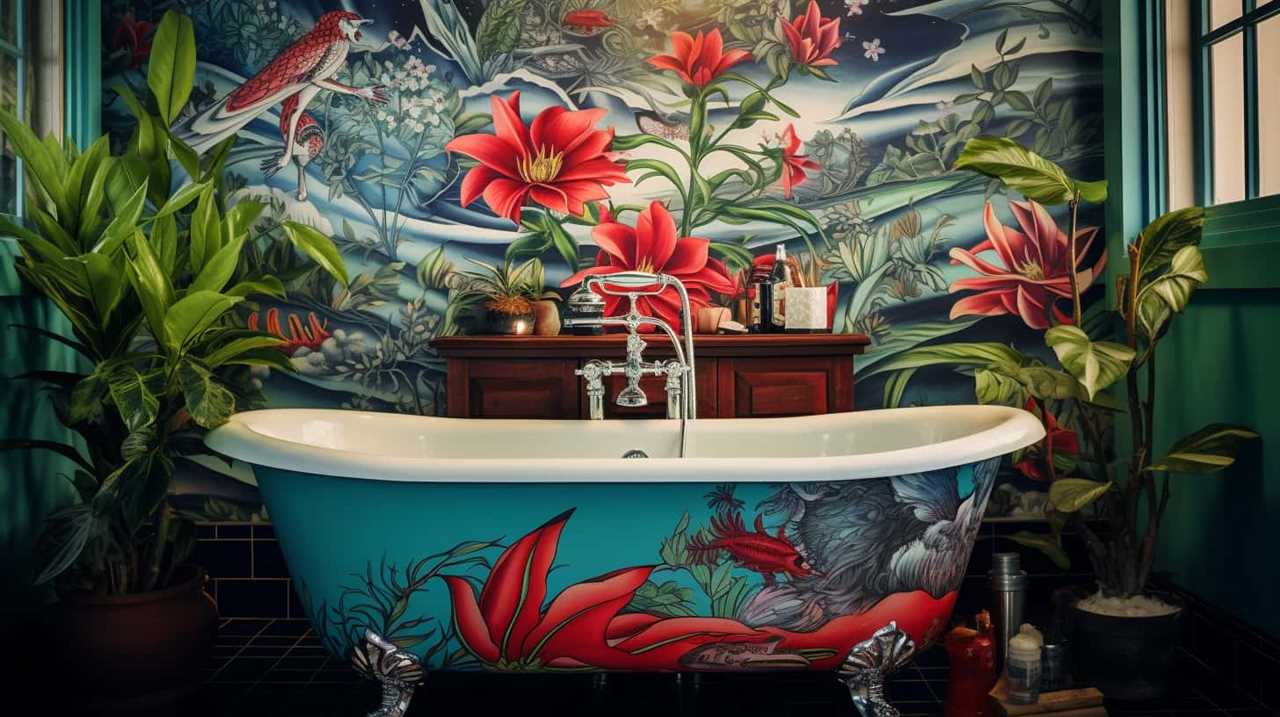
Conclusion
In conclusion, having a window in the bathroom isn’t only a matter of personal preference, but also an important aspect for natural light and ventilation.
According to a study conducted by the American Society of Heating, Refrigerating and Air-Conditioning Engineers, inadequate ventilation in windowless bathrooms can lead to increased humidity levels and potential mold growth, impacting indoor air quality and overall health.
Therefore, it’s crucial to consider alternative options or design strategies to ensure proper airflow and lighting in windowless bathrooms.

